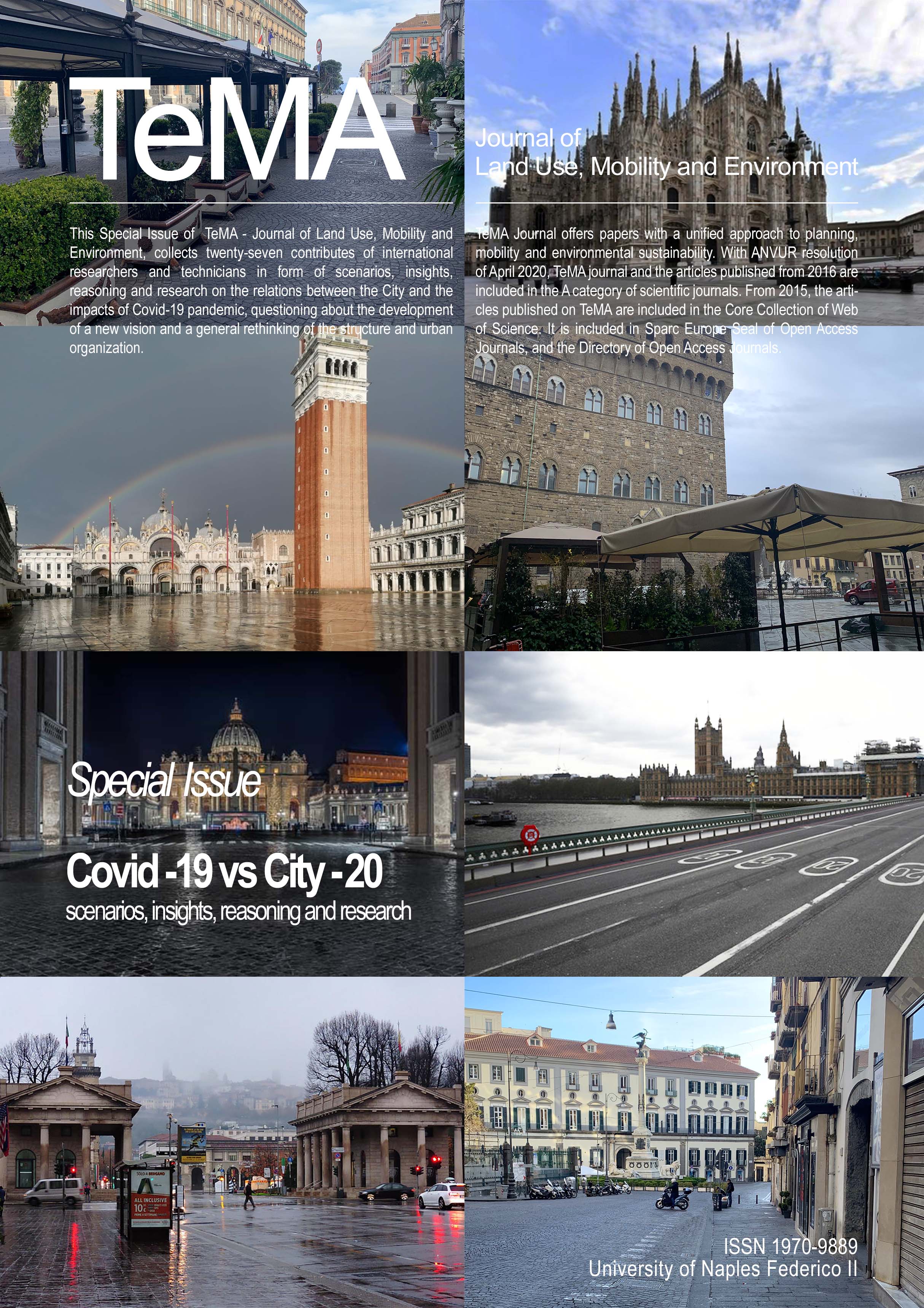About the Sustainability of Urban Settlements
A first reflection on the correlation between the spread of Covid-19 and the regional average population density in Italy
DOI:
https://doi.org/10.6092/1970-9870/6984Keywords:
Sustainability, urban development, pandemicAbstract
Urbanization is an onerous human activity: it affects municipal budget and foremost it costs the environment. Nevertheless, an ever-growing number of people (more than 75% of the European population) is living in cities and towns, so that identifying sustainable urban development solutions is a dramatically urgent need. Already in the 70s, some researches proposed parameters to evaluate urbanization costs in Italy, but they mainly focused on the economic and financial sustainability of real estate development. The land value capturing approaches proved to be inadequate when municipal budgets are facing growing social unbalances and critical environmental threats. The question being not just “where the money for urban infrastructures could come from”, but also “what could be a more sustainable development model”. In any case, now we are forced to rethink the whole organization of our urban life to defend ourselves from largely unknown threats, pandemics, COVID-19 being probably one among others that we could face in the near future. It is not yet clear if a link exists between the spread of the virus, the health consequences and the environmental conditions, but what probably will need to be assessed is the effect of population density on the spread of contamination. Even the traditional provision of services and public spaces will need to be defined again in order to protect and serve urban population. New evidences will force planners to redefine their thoughts and schemes.
Downloads
Downloads
Published
How to Cite
Issue
Section
License
Authors who publish in this journal agree to the following:
1. Authors retain the rights to their work and give in to the journal the right of first publication of the work simultaneously licensed under a Creative Commons License - Attribution that allows others to share the work indicating the authorship and the initial publication in this journal.
2. Authors can adhere to other agreements of non-exclusive license for the distribution of the published version of the work (ex. To deposit it in an institutional repository or to publish it in a monography), provided to indicate that the document was first published in this journal.
3. Authors can distribute their work online (ex. In institutional repositories or in their website) prior to and during the submission process, as it can lead to productive exchanges and it can increase the quotations of the published work (See The Effect of Open Access)


